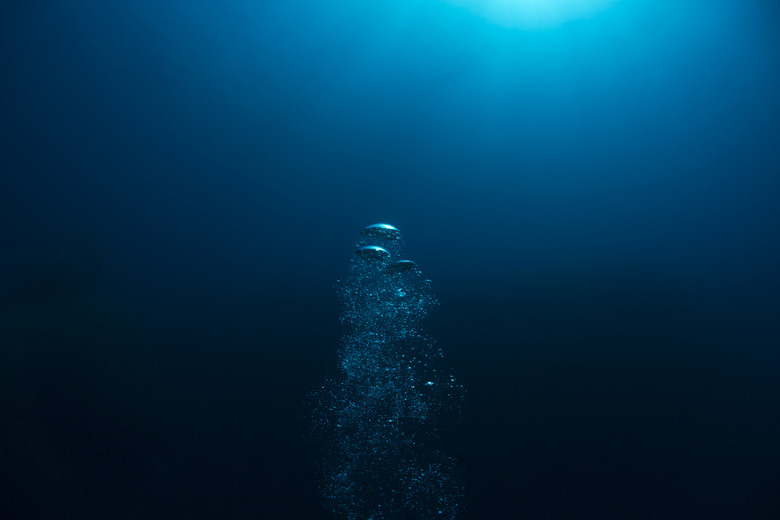List Of Hadal Zone Animals
The creatures that roam the deepest parts of the ocean, known as the _hadal zone_ or hadopelagic zone, are largely a mystery to humans. It's only recently that we've developed technology that allows us to plunge miles beneath the surface of the water where extreme pressure (strong enough to crush metal), low light levels and cold temperatures make life seemingly impossible.
Despite these intense and extreme conditions, life has found a way to adapt and survive at the deepest parts of the ocean. The animals that live at these depths are known as hadal zone animals. They've evolved amazing adaptations that allow them to survive with no light and at extreme pressures.
Oceanic Zones/Levels
Oceanic Zones/Levels
Scientists divide the ocean into four distinct zones:
- Epipelagic Zone (0 feet – 656 feet below the surface)
- Mesopelagic Zone (656 – 3,281 feet below the surface)
- Bathypelagic Zone (3,281 – 12,124 feet below the surface)
- Abyssopelagic Zone (12,124 – 19,686 feet below the surface)
- Hadalpelagic Zone (19,686 feet - ocean floor) – also called the hadopelagic zone
Almost all oceanic life exists in the epipelagic zone, which goes from the surface of the ocean down to 656 feet below the surface. Most life exists here because it is within this zone that sunlight and the sun's rays/energy can penetrate into the water.
Any further down than that receives little to no light, low temperatures and immense pressure, which makes sustaining life difficult. The hadalpelagic zone is the deepest and darkest zone in the ocean.
Hadopelagic Zone Details
Hadopelagic Zone Details
The Hadal Zone starts 19,000 feet below the surface and extends to the ocean floor. It's also known as "The Trenches" because these depths in the ocean are often only seen in oceanic trenches and troughs.
Pressures in the Hadal Zone can reach 16,000 psi, which is 110 times the pressure on the surface. The temperature in these deep waters is extremely cold, ranging between 1 and 4 degrees C (33.8 to 39.2 degrees F). Sunlight is unable to reach these depths, which means the zone exists in perpetual darkness.
Despite this, there are currently about 400 known species that live in this zone with more being discovered as we explore these deep underwater areas.
Amphipods
Amphipods
The animals found most often in the hadopelagic zone are called amphipods. Amphipods are tiny flea-like crustaceans that are found by the thousands in every explored Hadal Zone.
These small soft-shelled crustaceans have been found as deep as 29,856 feet. Their huge concentration in this zone leads scientists to believe that they're at the bottom of the food chain and provide key sustenance and serve as a food source for other animals and fish at the bottom of the ocean.
These species are mostly scavengers picking up on any debris floating from zones above. They also attack and eat each other and other small organisms. One particular species of interest is the Alicella gigantea. While most of these amphipods are quite small, this species can reach up to 13 inches in length.
Snailfish
Snailfish
Snailfish are the most dominant family of fish found in the Hadal Zone. These Hadal Zone animals are currently the deepest living fish ever recorded, living at a depth of 26,831 feet below the surface. These gelatinous fish are translucent, so much so that you can see all of their inner organs.
They've evolved to have a skeleton made of cartilage instead of bone, which researchers believe helps them survive at such high pressures. They also have evolved to use a special compound called trimethylamine oxide (TAMO) that helps them to stabilize proteins and cell membranes at such high pressures.
Cusk-Eels
Cusk-Eels
Cusk-Eels are eel-like fish species that have been found as deep as 27,460 feet below the surface of the ocean. While they might look like eels and have "eel" in their name, they're actually not members of the eel family. Instead, they're fish that are closely related to tuna, perch and seahorses as members of the Percomorpha clade of fish.
What's interesting about these fish is that they can be found in zones ranging from the shallow epipelagic zone all the way down to the hadalpelagic zone. This indicates that it's able to survive in a number of temperatures and pressures.
It currently holds the record for the deepest known fish. It's believed to mostly eat amphipods and plankton. Like snailfish, the specimen captured (Abyssobrotula galatheae) has translucent skin. They've also evolved to have likely non-functional eyes since light levels are low to non-existant in this zone of the ocean. They have evolved "sensory pores" on their head that scientists believe evolved to replace the need for eyes.
The skeleton of this fish is reinforced with extra bone material in a process known as ossification. This is believed to help the fish withstand the immense pressures of the ocean at that depth.
References
- World Atlas: The 5 Layers of the Ocean
- HADAL Ecosystem Studies: About Hades
- LiveScience: Supergiant Crustaceans Found in Deep Sea
- Deep Sea Research – Oceanographic Research Papers: Fishes of the hadal zone including new species, in situ observations and depth records of Liparidae
- Eco Magazine: Extreme Exploration: The Hadal Zone
- Nature: Snailfish Is the First Animal from Extreme Ocean Depths to Have Its Genome Sequenced
- The Conversation: Snailfish – How We Found a New Species in One of the Ocean's Deepest Places
- Phys: The Deepest-Dwelling Fish in the Sea is Small Pink and Delicate
- Mapress: A New Species of Abyssobrotula (Ophidiiformes, Ophidiidae) from the Kuril-Kamchatka Trench
- Business Insider: The World's Deepest-Dwelling Fish Is Actually This Strange-Looking 'Eel'
Cite This Article
MLA
Walsh, Elliot. "List Of Hadal Zone Animals" sciencing.com, https://www.sciencing.com/list-hadal-zone-animals-8119649/. 22 November 2019.
APA
Walsh, Elliot. (2019, November 22). List Of Hadal Zone Animals. sciencing.com. Retrieved from https://www.sciencing.com/list-hadal-zone-animals-8119649/
Chicago
Walsh, Elliot. List Of Hadal Zone Animals last modified August 30, 2022. https://www.sciencing.com/list-hadal-zone-animals-8119649/
